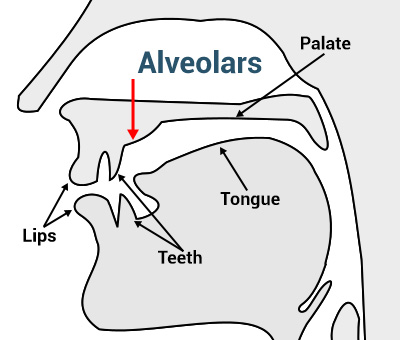/θ/ is voiceless dental/ interdental fricative (voiceless 'th' sound).
/ð/ is voiced dental/ interdental fricative (voiced 'th' sound).
/ð/ is the sound you have difficulty with.
Voicing:
Voiced sounds are the ones in which there's vibration in the throat. You can also detect voicing by sticking your fingers in your ears.
Examples: /b/, /d/, /z/, /g/, /l/, /m/, /n/ etc are voiced sounds in English.
Articulators:
At each place of articulation, there is a constriction between an active articulator and a passive articulator. The active articulators are the lower lip and the tongue, while the passive articulators are the upper lip, the upper teeth, the roof of the mouth, and the rear wall. Active articulators are movable in the process of articulating a particular sound while passive articulators are not.
How we pronounce 'th' sound:
We pronounce the 'th' sound in two ways, depending on how the tongue sticks out between the teeth.
-
It's articulated by touching the top teeth just below the alveolar ridge.
-
It's articulated by putting the tip of the tongue between the top and the bottom teeth.

How to make voiceless 'th' sound (/θ/):
An easy way to produce this sound is; open your mouth, rest your tongue on the bottom teeth right behind the bottom lip, bring your top teeth down slowly and then blow out gently until the natural sound produces. That's the voiceless 'th' sound (/θ/).
How to make voiced 'th' sound (/ð/):
If you can't articulate this sound, use the following method:
For /ð/ sound, you need to vibrate your vocal cords. In order to vibrate your vocal folds, produce a vowel sound (vowels are voiced).
- Say aaaaaaaaaa.
- Then move your tongue up slowly and touch the top teeth while saying aaaaa.
- Produce that sound for a minute, then touch your throat with your hand and you'll see that there's a vibration in your throat. That's the voiced 'th' sound (/ð/).
This method also works for /v/ sound. If you can't pronounce /v/ correctly, say aaaaaa then move your lower lip and touch the top teeth with your lip, that's the /v/ sound.

